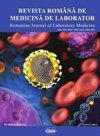Novel DCX pathogenic variant in a girl with subcortical band heterotopia
IF 0.5
4区 医学
Q4 MEDICINE, RESEARCH & EXPERIMENTAL
引用次数: 1
Abstract
Abstract Subcortical band heterotopia (SBH), is a brain malformation defined by symmetrical and bilateral heterotopic gray matter bands localized deep within the white matter, between the cortex and lateral ventricles. SBH is the result of abnormal neuronal migration, with improper positioning of the cortical neurons. DCX gene (doublecortin), a microtubule-associated protein with essential roles in neuronal migration and differentiation during brain development, is one of the main contributors to the X-linked Lissencephaly spectrum pathogenesis (OMIM #300067). DCX variants are responsible for SBH in females and isolated lissencephaly in males. Herein, we present a 7-year-old girl with a de novo frameshift variant in DCX gene, unreported by date. The patient has focal complex seizures with onset at 23 months of age, fully controlled with medication, mild tremor and coordination impairment of fine movements and some learning difficulties, otherwise with normal development. The brain magnetic resonance imaging revealed the presence of thick SBH. Direct sequencing of DCX gene revealed a pathogenic heterozygous cytosine duplication in exon 3; this frameshift variant leads to a premature stop codon in position 164 (p.Gln160Profs*5). The variant type and its predicted consequence at protein level correlates with the severity of radiological findings. The clinical presentation of our patient is, however, milder than expected. Our research expands the mutational spectrum of DCX gene in SBH females and provides a detailed clinical and imagistic description of the patient. This paper highlights the utility of single gene sequencing as a first-tier diagnostic test of patients with gene-specific phenotypic features.一名皮质下带异位女孩的DCX新致病变异
皮层下带状异位(Subcortical band heterotopia, SBH)是一种脑部畸形,其特征是位于白质深处、皮层和侧脑室之间的对称和双侧灰质带状异位。SBH是神经元异常迁移的结果,皮质神经元位置不正确。DCX基因(双皮质素)是一种微管相关蛋白,在大脑发育过程中神经元迁移和分化中起重要作用,是x连锁无脑畸形谱系发病机制的主要贡献者之一(OMIM #300067)。DCX变异是导致女性SBH和男性分离性无脑畸形的原因。在此,我们报告了一个7岁的女孩,在DCX基因中有一个新的移码变异,未报道日期。患者23月龄时有局灶性复杂发作,经药物完全控制,轻度震颤,精细动作协调障碍,部分学习困难,其他发育正常。脑磁共振成像显示有较厚的SBH。直接测序显示DCX基因外显子3存在致病性杂合胞嘧啶重复;该移码变体导致164位过早终止密码子(p.Gln160Profs*5)。变异类型及其在蛋白水平上的预测结果与放射学表现的严重程度相关。然而,我们患者的临床表现比预期的要温和。我们的研究扩展了SBH女性DCX基因的突变谱,并为患者提供了详细的临床和影像学描述。本文强调了单基因测序作为具有基因特异性表型特征的患者的一线诊断测试的效用。
本文章由计算机程序翻译,如有差异,请以英文原文为准。
求助全文
约1分钟内获得全文
求助全文
来源期刊

Revista Romana De Medicina De Laborator
MEDICINE, RESEARCH & EXPERIMENTAL-
CiteScore
0.31
自引率
20.00%
发文量
43
审稿时长
>12 weeks
期刊介绍:
The aim of the journal is to publish new information that would lead to a better understanding of biological mechanisms of production of human diseases, their prevention and diagnosis as early as possible and to monitor therapy and the development of the health of patients
 求助内容:
求助内容: 应助结果提醒方式:
应助结果提醒方式:


